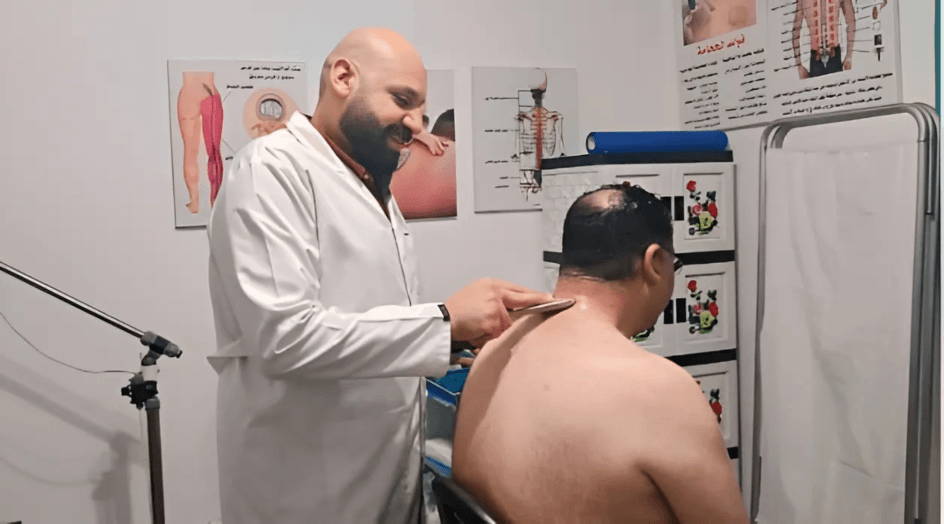
In this article, we will discuss in detail the methods of diagnosing this disease and the available treatments for it, starting from conservative treatments and reaching surgery in advanced cases. We will also discuss the importance of preventing this disease to maintain the health of the spine.
For reservations and communication
Diagnosis of thoracic disc herniation
Thoracic disc herniation is usually diagnosed through a physical examination and medical imaging. These tests include:
- Physical examination: The doctor checks the movement of the spine and presses on pain points to determine the location of the herniated disc.
- X-rays: X-rays help detect any changes in the shape of the vertebrae or the presence of any fractures.
- Magnetic resonance imaging (MRI): MRI is the most accurate test for diagnosing a herniated disc, as it provides detailed images of soft tissues and nerves.
- Computed tomography (CT scan): This test may be used in some cases to provide more detailed images of the spine.
Treatment of thoracic disc herniation
Treatment for thoracic disc herniation depends on the severity of symptoms, the patient’s age, and his general health condition. Available treatment options include:
1. Medication:
Painkillers: used to relieve pain and inflammation.
Muscle relaxants: help relieve muscle spasms.
Nonsteroidal anti-inflammatory drugs (NSAIDs): help reduce inflammation and relieve pain.
2. Physical therapy:
Physiotherapy aims to strengthen the back muscles and improve flexibility, relieve pain, and teach the patient how to maintain correct body posture.
3. Manual therapy and chiropractic:
Manual therapy helps improve joint movement and reduce pain, while chiropractic works to realign the vertebrae.
4. Surgery:
Surgery is used in severe cases that do not respond to other treatments, which cause paralysis or severe weakness in the limbs.

Types of surgery
- Removal of the protruding part of the cartilage: The protruding part of the cartilage that is pressing on the nerve is removed.
- Vertebral fusion: The affected vertebrae are fused to prevent movement and reduce pain.
- Prevention of thoracic disc herniation.
- Exercise regularly: Exercise helps strengthen the back muscles and improve flexibility.
- Maintain a healthy weight: A healthy weight helps reduce pressure on the spine.
- Lift weights correctly: Weights should be lifted using the knees and back straight.
- Maintain good sitting posture: Sit up straight with lower back support.
- Use a suitable mattress: A mattress that supports the spine well should be chosen.
Note: A doctor should be consulted to determine the appropriate treatment for each individual case.
In conclusion, thoracic disc herniation is a condition that can be successfully treated if diagnosed and treated early. By following the above tips, this disease can be prevented and the spine can be maintained healthy.
If you have any other questions about thoracic disc herniation, you can contact us!
Suggested Keywords
- Thoracic disc herniation
- Causes of thoracic disc herniation
- Symptoms of thoracic disc herniation
- Risk factors of thoracic disc herniation
- Treatment of thoracic disc herniation
- Prevention of thoracic disc herniation
- Back pain
- Chest pain
- Spine
- Cartilage
Share this article
Suggested topics
Copyright © 2024 Egypt Chiropractic Center | All Rights Reserved & Powered by Infinity Creative














